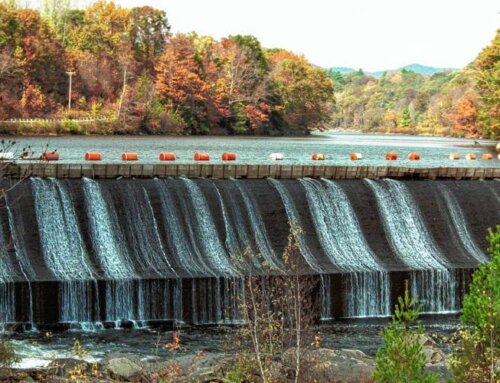Numerous travel guides praise the Connecticut River but the acclaim can be a double-edged sword. On one hand the Connecticut River has advocates at local, state, regional and federal levels mindful of resource protection and sustainable development in order to protect this treasure. All of this work has resulted in a cleaner river and a waterway that harkens one back to times past.
On the other hand, the beauty and accessibility of the river attracts us and thousands of visitors year round. Along with the explosion in motorized boating, kayaks and canoes travel through areas not accessible to motorized boats creating an illusion of being alone in nature.
Keep in mind though we are not alone and these quiet places are home to other creatures. We should offer them the same courtesy we would expect of a visitor in our own home. We would not appreciate strangers peering in our windows while preparing dinner, getting ready for bed, teaching our children, or cuddling with a loved one. You would not want beverage containers, food wrappers, or cigarette butts dumped in your living room either.
Wildlife is stressed by the presence of perceived predators and this includes human activity. Minimize your impact on wildlife you encounter. How? Read on.
Keep your distance. You should try to keep a buffer zone of approximately 200 feet between you and any animal. When traveling in groups, double that distance and save your talk for the ride home afterwards. Move slowly and quietly but do not sneak up on animals or birds. A startled animal is a stressed animal.
Learn the signs of stress in wildlife when you move too close to them or their young. Threatened animals will walk, run, crawl, slither or hop away; cease foraging and watch YOU intently and may point their ears at you. They may make sudden nervous movements in place or conversely stand still, adopting an “invisible” posture; display specialized behavior such as deer stamping their feet or beavers slapping their tails on the water.
Birds too offer stress signals and with few exceptions they will take flight; ospreys and herons will cry out; least terns, swallows and willets may dive bomb when you come to close to their nests and killdeer will make loud keening calls and fly off but circle back and keep calling.
There are some simple steps you can take to put our wild neighbors at ease. Purchase a good pair of waterproof binoculars and/or a spotting scope so rather than moving closer you can observe from a distance. When you are canoeing learn to paddle quietly or simply drift with the current. In all cases avoid sudden movements and don’t stop to watch wildlife face-on. To birds and animals, this is an aggressive predatory stance that puts them on high alert.
Then there is the whole wet world. Few people observe the living creatures in the aquatic world and because most of us do not know our aquatic neighbors we can be less concerned about abuses perpetrated on the river. So here are a few tips on how to see the life in a river.
Wear polarized sun glasses and a peaked cap when you are on the water. Fishing guides depend on them. They will allow you to see into the water by cutting down on the overhead and surface glare. You will be amazed at what you see with a little patience and you will become aware there is a thriving biosphere in healthy water.
Become an “over the side of the bridge” watcher by moving slowly into position and waiting a few minutes. You will be surprised at what will swim into view. It does not matter the size of the stream either; even the smallest of our brooks host several species of fish including brook trout.
When you are walking the shore, pick up a hand sized rock that is in submerged in the river but not embedded in the river bottom and turn it over quickly. You will see nymphs scurrying away to the edges of the rock. Nymphs are the aquatic life stage of the insects you see flying over rivers. They could be stoneflies, midges or mayflies and the 4 inch long mandible armed thousand legged one is a hellgrammite, startling but not dangerous.
Look to see if there are any caddis fly cases attached to the rocks. Their underwater homes could be shaped as small roundish gravel disks; small rock jumbles attached to larger cobble stones, inch long wood stick casings or cocoons of gravel. With luck when you are moving through shallow water you will see sculpins dart under rocks, crayfish shooting backwards away from you to find a hiding place under another rock and that dinner plate sized light colored hollow on the bottom of the river, it’s a fish nest (redd) so do not walk on it.
There is now a constant human presence on the river and it is the cumulative thoughtless intrusions that magnify our impact. Stay back, be quiet, be watchful and learn to observe the watery species while you enjoy our river.
David Deen is River Steward for the Connecticut River Watershed Council. CRC has been a protector of the Connecticut River for more than half a century.







